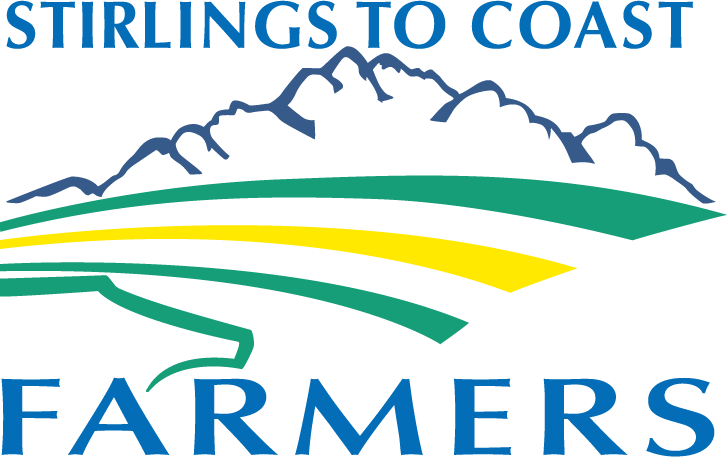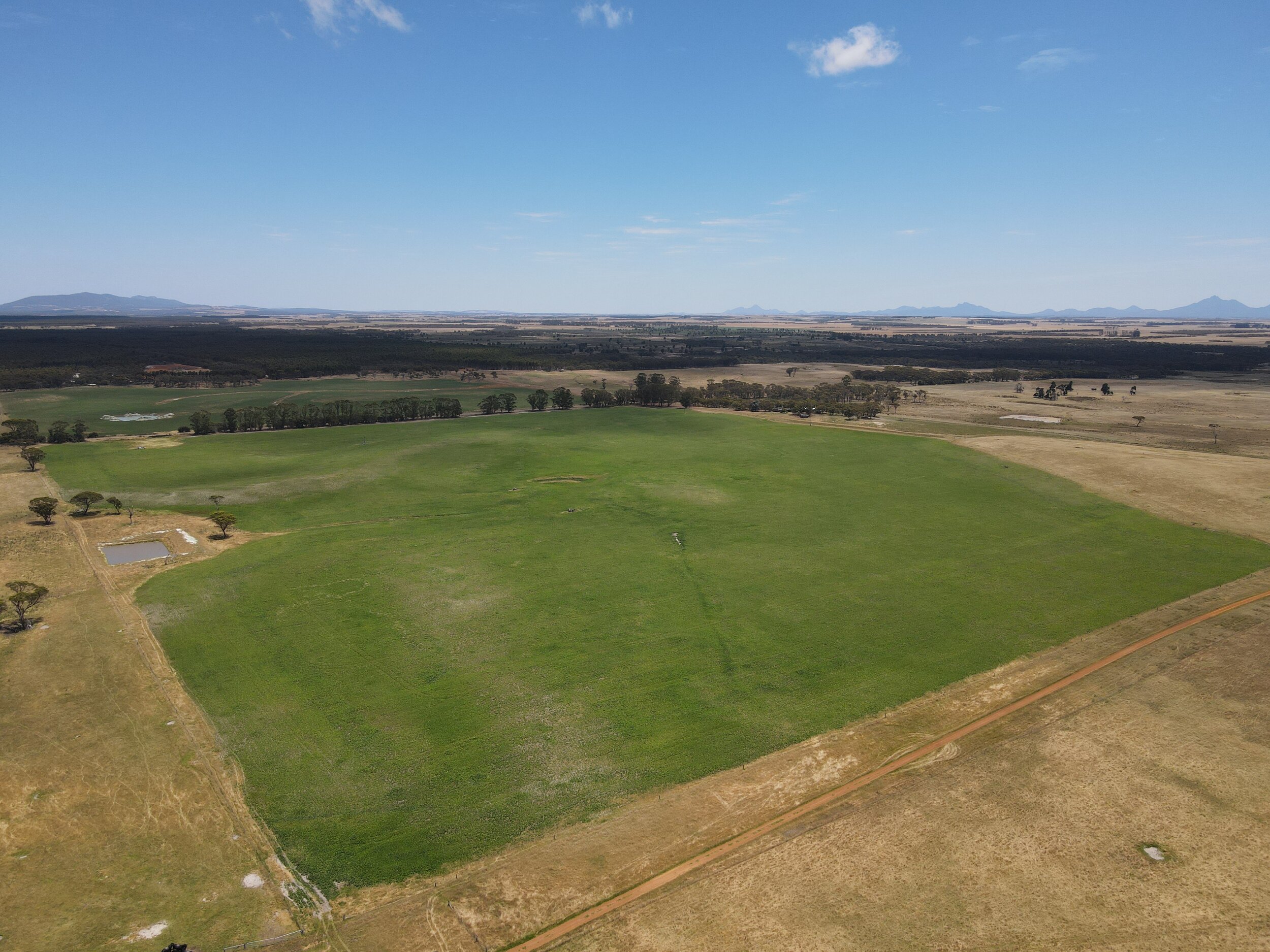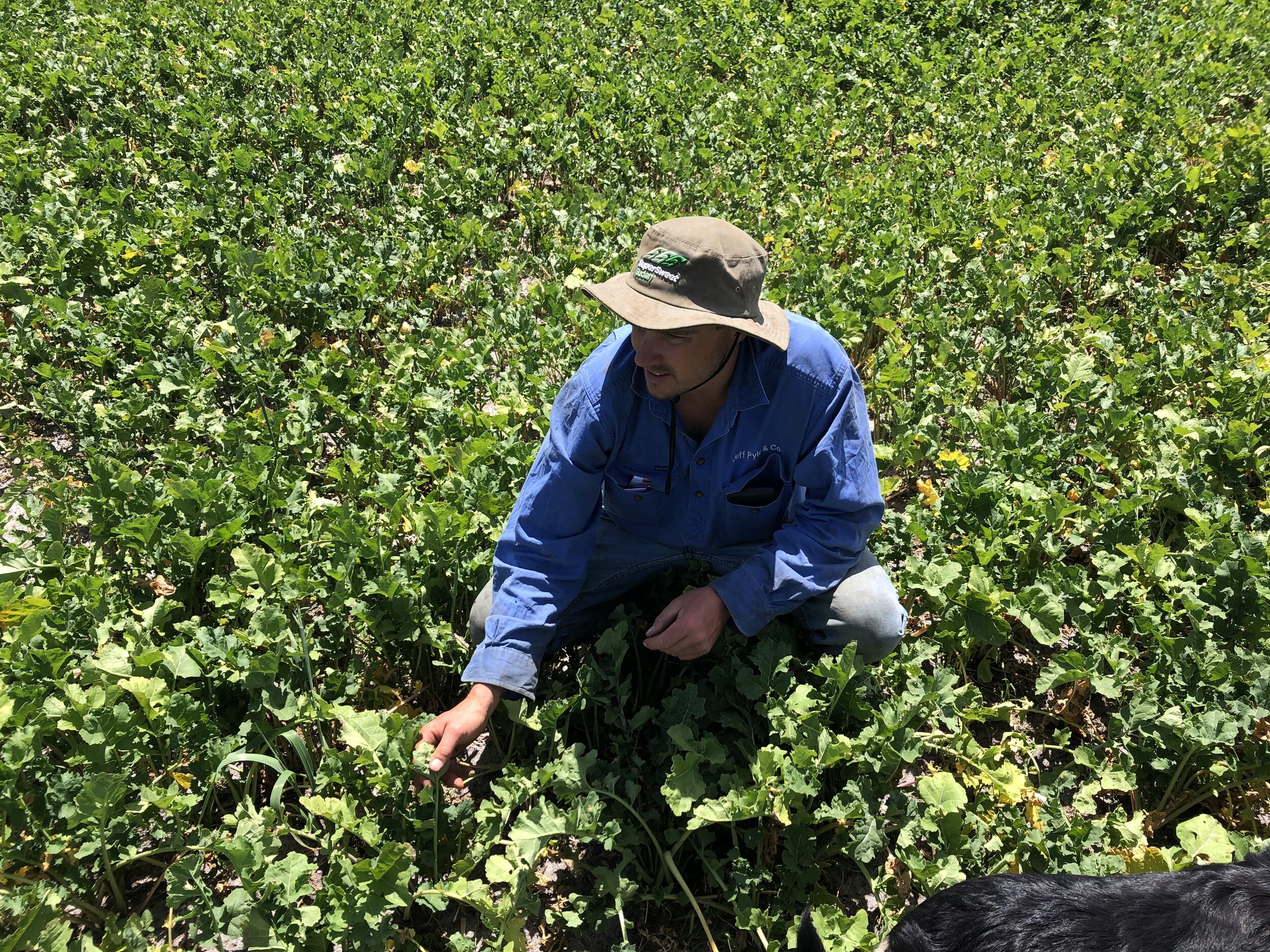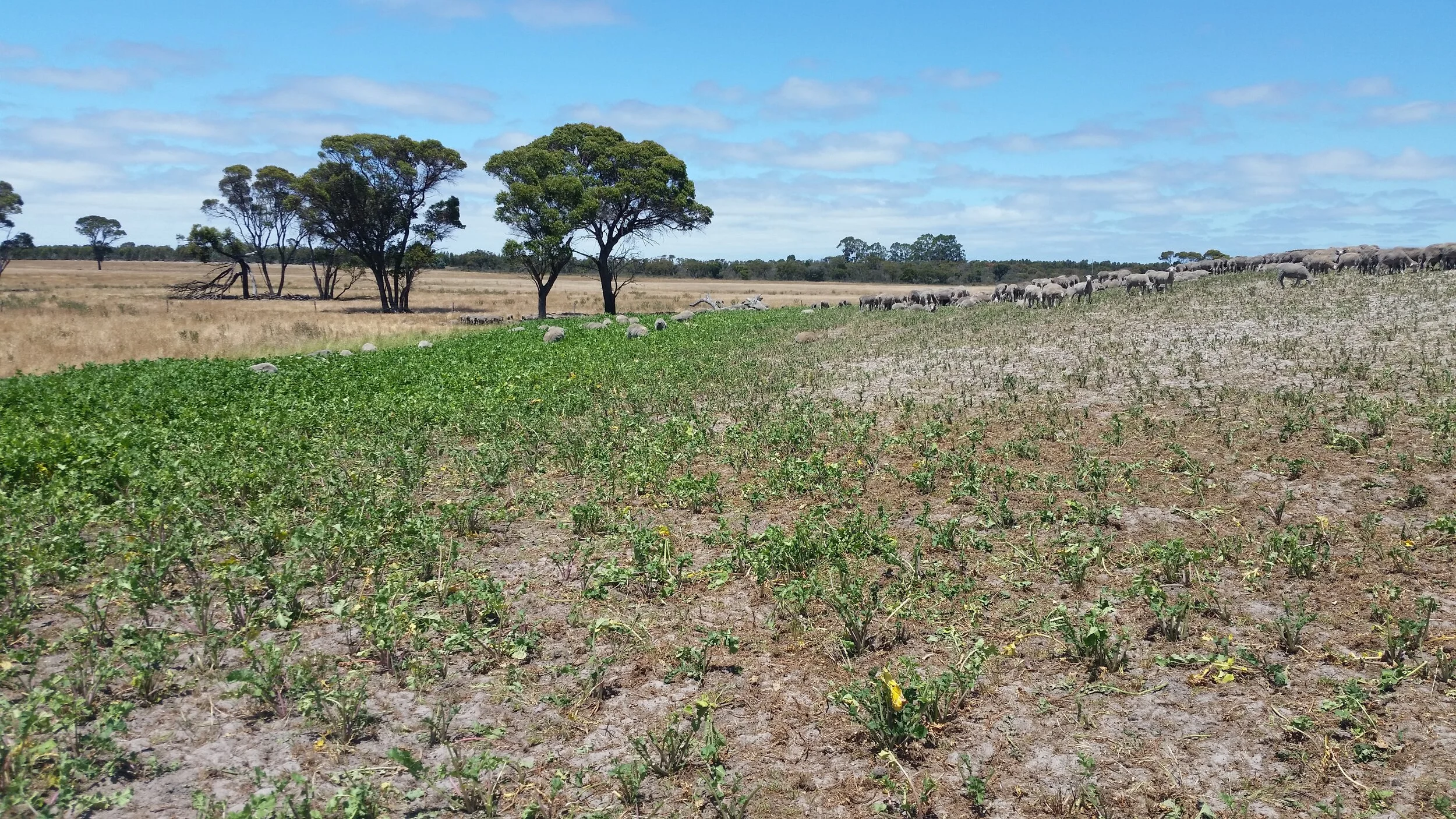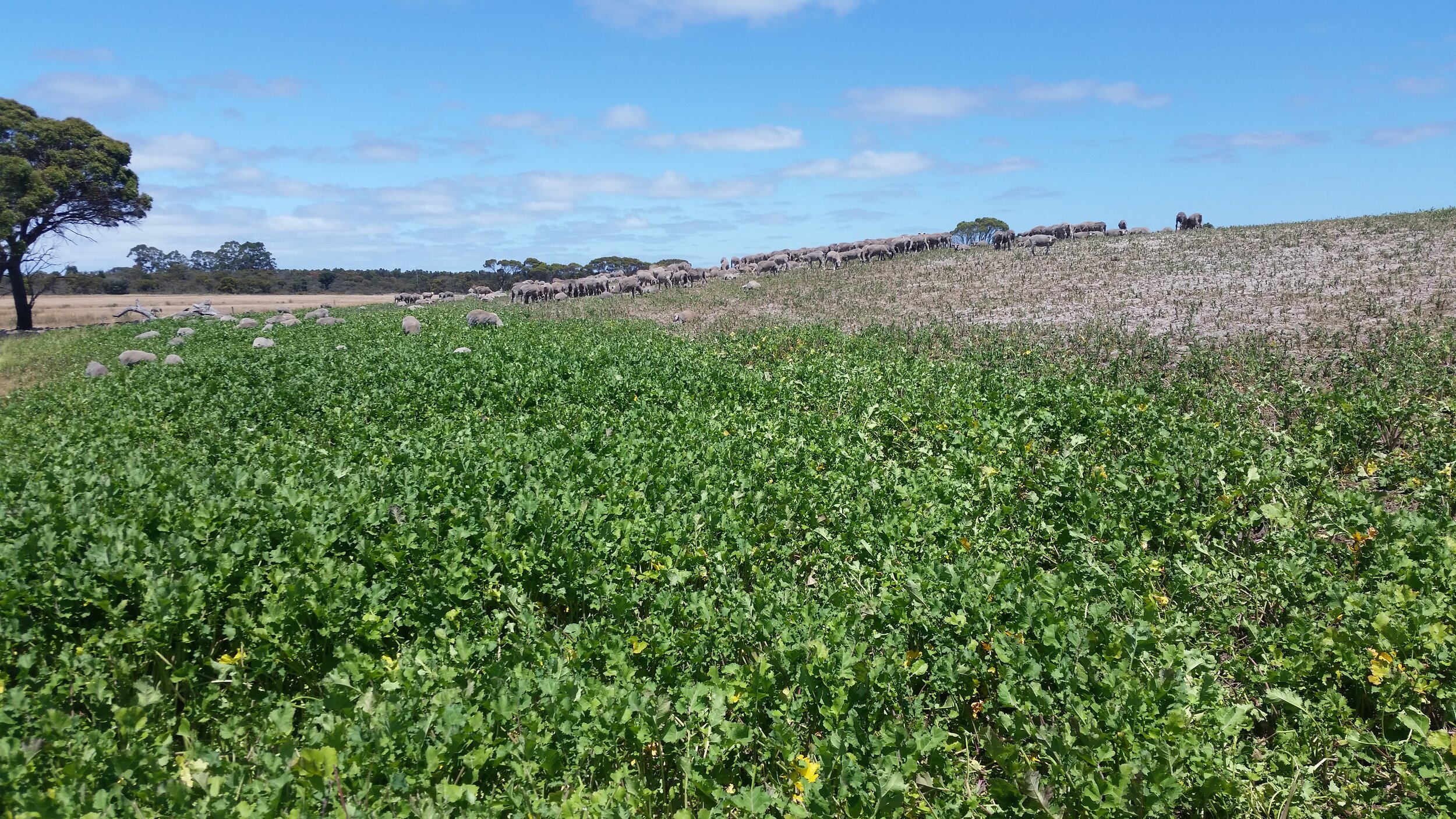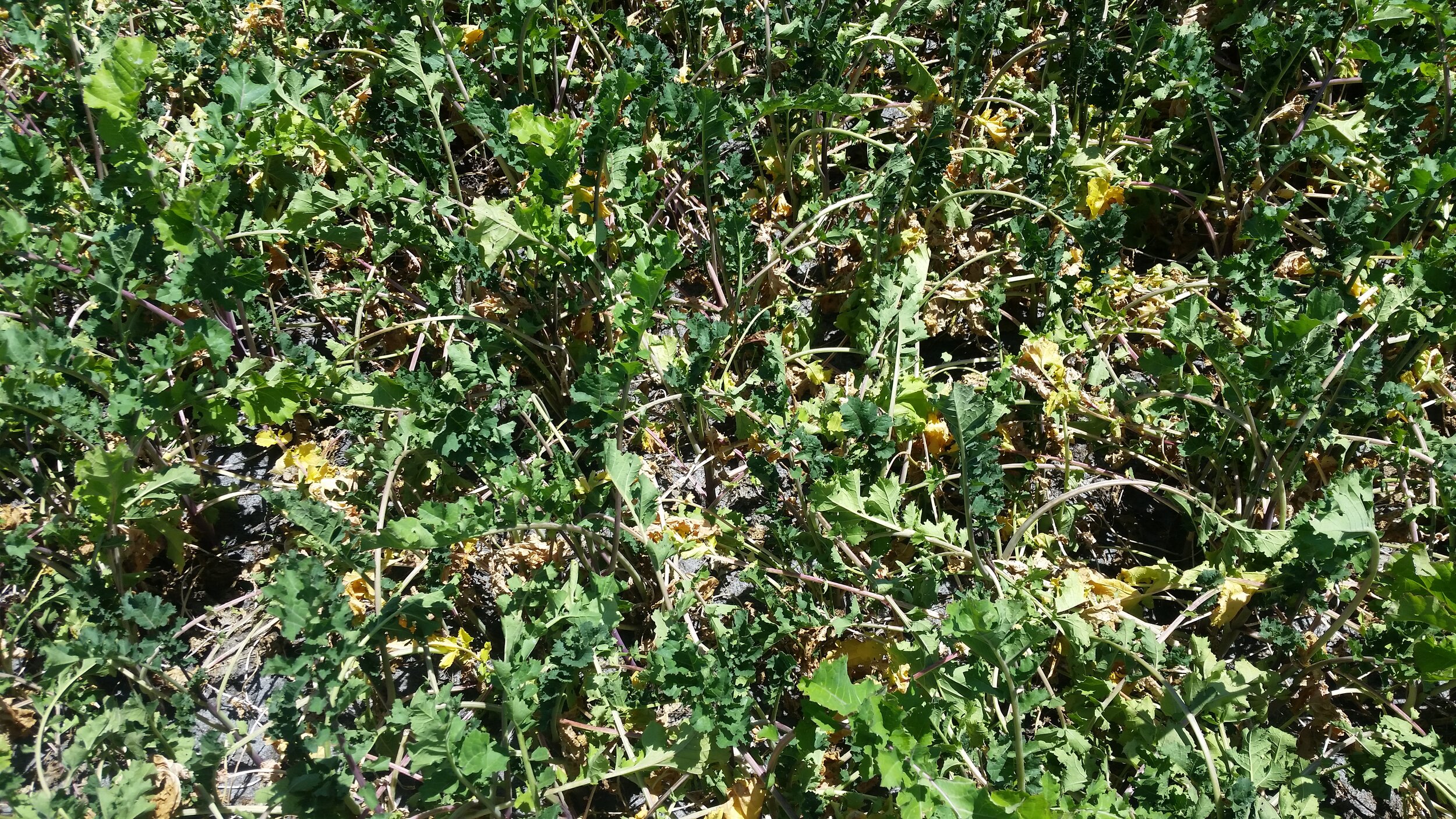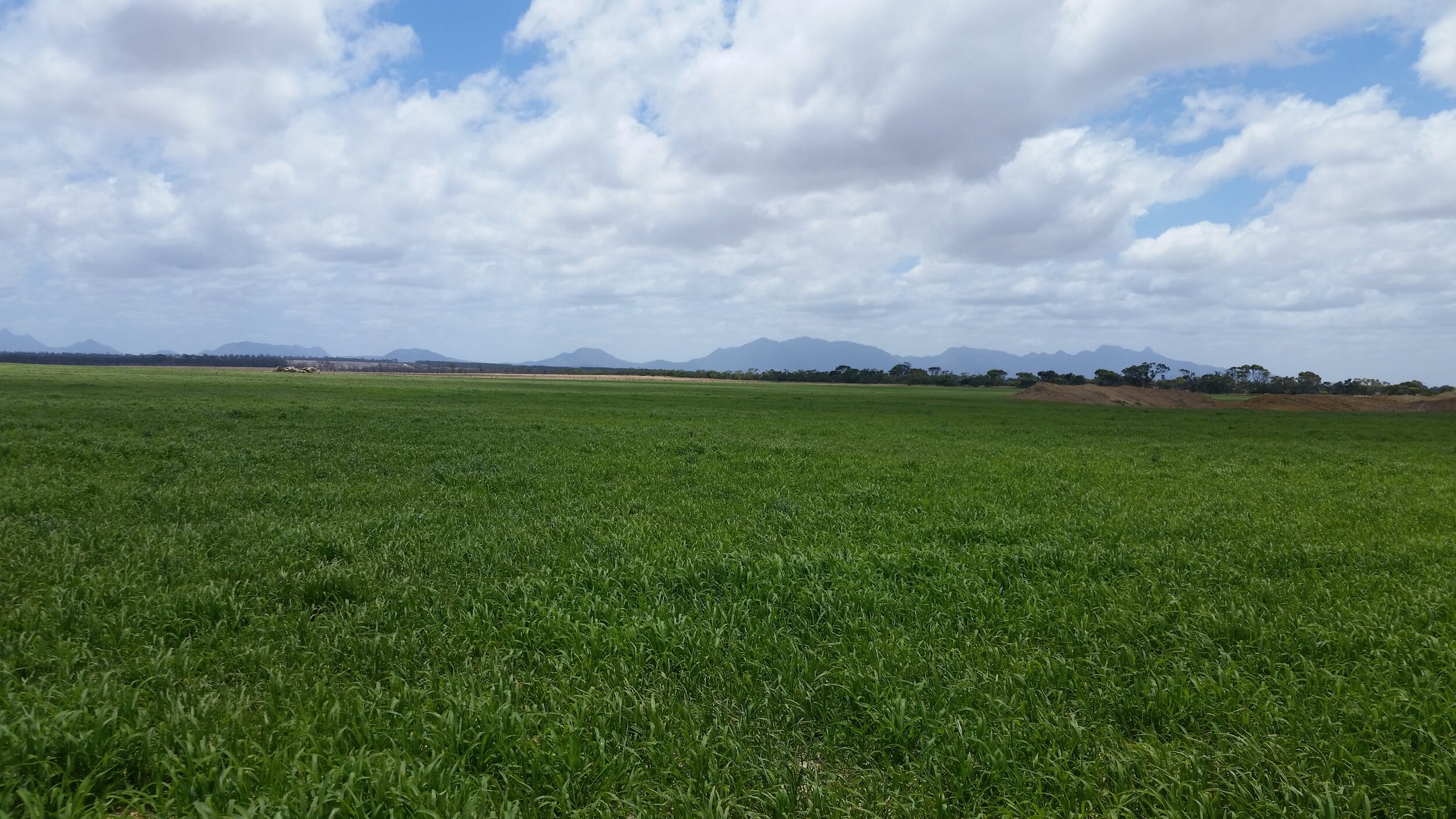Alternate forage crops for southern WA
Key Messages:
All alternate forage species recorded a higher nutritional value than their control comparison which was either a stubble or established pasture.
All except one alternate forage species recorded consistently higher biomass compared to their control. Of the forages trialled only millet consistently yielded less.
A higher nutritional value partly contributed to all alternate forages being able to support a higher stocking rate than the traditional feed source they were compared to.
More liveweight per hectare was always produced by the alternate forage. However, none more so than Pallaton Raphno, where lamb live weight gain was a staggering 5.35kg/ha/day compared to 1.31kg/ha/day achieved on the ryegrass in year one.
The improved weight gain per/ha did not always equal increased profit per ha once establishment costs were taken into account. However profit was only recorded over the short grazing period measured and a more accurate profit would require measurements being recorded over a year or the life of the alternate forage.
Summer rainfall in the southwest of WA is happening more frequently. In 2021 over 90ml of rainfall was received for (Manypeaks) from 1 January to 10 March. There is an opportunity for producers in the south west high rainfall zone (HRZ) to take advantage of summer rainfall events with summer forage crops, but this begs the questions as to what a summer forage can contribute to the farming systems and what species are best suited. Stirlings to Coast Farmers (SCF) set out to explore these questions with a project specifically looking at Pallaton Raphno, millet, Hyola 970 canola, cowpea and sorghum. In the 2020 season producer demonstration paddocks were sown to Raphno and millet and the findings are presented below.
Benefits from summer crops allow deferred grazing on annual pastures, giving them more time to establish and reach critical biomass before stock graze them, which means more productive annual pastures with more biomass. More feed availability during the autumn feed gap will improve profitability in one of two ways. Firstly, by carrying more livestock and secondly, by having animals ready for the market outside of peak supply times.
Kent Rochester, Manypeaks, Pallaton Raphno - 2020
Tim and David Pyle, Manypeaks / South Stirlings, Pallaton Raphno -2020, 2021
Ryan Smith, Green Range, Millet - 2020, 2021
Tim Metcalfe, Manypeaks / Porongurup, Sorghum / Winter wheat, 2021, 2022
Clare Webster, Tenterden, Millet - 2023
To find out more about this project, please contact Samantha Cullen on 0417 605 784.
resOURCES
Videos
ACKNOWLEDGEMENTS
This project is funded by the Meat and Livestock Australia.
